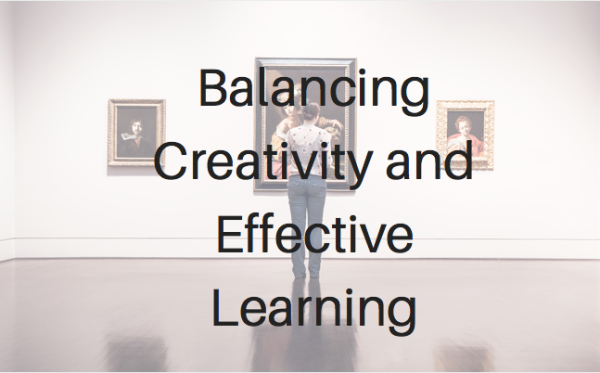
This post is part of an eight-part series on graphic design for eLearning. You can look for this series every other Thursday here on our blog (and sharpen your skills with each and every post.)
We’ve talked before about graphic design as a whole for eLearning development, but today, we’re going to focus in on one specific topic: Balancing creativity and effective learning.
The Struggle in the Design Department
One of the biggest struggles an Instructional Designer faces in the graphic design department is balancing those creative, innovative graphics with what’s going to be most effective for teaching the concepts of the course.
Sometimes, those fancy graphics and creative concepts overshadow the learning itself—which doesn’t help your audience. In fact, if it’s too advanced, it might even make things complicated and frustrating for the learner.
So how do you find a happy medium between creativity and effective learning?
Conduct User Testing
One of the easiest ways to spot places where graphic design isn’t effective is to invite some fresh eyes to test out the course. You’ve heard the old adage “too close to the forest to see the trees” right? Well, sometimes you need someone that hasn’t been staring at it for a week to make sure it makes sense to the viewer at first glance. If you find that they get caught up or confused based on the design, you’ll be able to pinpoint and correct the issue before you send it over for client review.
Specifically look for places that these graphic design mishaps occur, such as:
Navigation
Drag and drop features
Buttons
Examine Text Treatment
Many eLearning courses cover a good amount of material—and there’s a temptation to just drop all of that text into the course (referred to as Wall of Text in some circles). On the other side of that, there can also be a tendency to try to mask an information dump by tying those words in with graphics.
Well-designed infographics can be a great way to package these bite-sized pieces of information that’s more visually digestible. Be careful here because there is an art to a good infographic. When you stray from the tight, balanced format used in these graphic representations, you can get an overwhelming mess.
Study Great Examples of eLearning
Another way you can get ideas for effective graphic design is to study what you like about different courses. Conduct a survey of different courses and take notes.
Now, we’re not suggesting that you rip off someone else’s work. But if you take the time to peruse some existing eLearning courses and write down what works well (and what you don’t like) within those examples, you can implement those observations into your next course.
Poll Your Users
Your audience is the most important opinion is all of this, so leave time at the end of the course for comments and a few quick poll questions that will help you better understand where you have room to improve your graphic design. They might point out a simple suggestion that has a major impact on the effectiveness of the course.
Finding Balance
Is there a secret formula to the perfect balance between innovative graphics and graphics that purely teach? Unfortunately the answer is no. But testing and tweaking can go a long way at making sure that balance stays in check.
